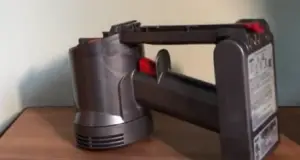Learn about Why is Vacuum Distillation Used?
The vacuum distillation process is a very efficient way of separating liquids that have different boiling points. In this article, we’ll go over the basics of vacuum distillation and some applications where it can be used. Also, in order to understand why is vacuum distillation used, read this article till the end.
What is Distillation?
This process entails transforming a liquid into a gas or vapor, which can then be converted back into its initial liquid state. To illustrate, consider the scenario where steam from a kettle condenses into droplets of distilled water on a cool surface, serving as an example for clearer comprehension.
The distillation is carried out under reduced pressure so that the liquid being distilled boils at a very low temperature rather than atmospheric pressure. This consequently has a lesser chance of decomposition. This type of distillation is known as vacuum distillation.
This is the process in which lowering of pressure takes place in the column above the solvent to less than the vapor pressure of the mixture. It is carried out along with creating a vacuum and causing the elements with lower vapor pressures to evaporate off.
The amazing fact is that lowering the pressure below atmospheric pressure results in lowering the temperature requirements to achieve evaporation for the elements of the distillate while lowering the overall heating requirements for the entire system.
Why is Vacuum Distillation Used?
This process is used to separate the liquids from non-volatile solids. For instance the separation of alcoholic liquors from fermented materials. It is very useful in the separation of two or more two liquids having different boiling points such as in the separation of kerosene oil, gasoline, and lubricating oil from crude oil. However, other industrial applications include the processing of other chemical products like phenol and the desalination of seawater.
VD is usually used when the boiling point of a solvent is too high and you have to distill the solvent without significant decomposition. Although the procedure is the same as micro-scale or semi-micro scale distillation.
But here the question is why we actually used vacuum distillation? The reason is that the vacuum pumps for vacuum distillation and drying are used in the chemical and pharmaceutical industry, and oil and food processing. They do so because performing processes in a vacuum are faster and very energy efficient as compared to conventional processes.
Aside from it, when you are performing vacuum distillation the product is not damaged because of high temperatures. So its lower temperature is another worth mentioning advantage along with the possibility of drying complex and less accessible areas. Moreover, to prevent corrosion, the parts are cleaned in a vacuum.
How is the Process Carried out?
Vacuum distillation is the perfect solution especially when you have elements that decompose when they are heated at atmospheric temperature. Or those elements that have high boiling points along with some high system heating requirements.
During the process, the liquid contained in the process material is vaporized with reduced pressure. Then the substance is extracted in gaseous form. After that, it can be re-liquefied, collected, recirculated, and processed with an incinerator, and then sent via the exhaust. Vacuum drying is generally used for drying plastic, ceramics, bricks, or plastic.
While in industrial use, it is a process in which vapors from a heated liquid mixture are condensed as it rises with the help of a vertical column. As vacuum is the major key component of this process. Here we explained the major benefits of using this method.
Benefits of Using Vacuum Distillation
The primary advantage of using the vacuum distillation method is that it may allow the distilling of heavier materials at relatively lower temperatures, than those that will be needed at atmospheric pressure. As a result, it avoids the thermal cracking of the components.
Here we give you some distinct benefits of vacuum fractional distillation. Most experts often prefer VD for the following reasons:
- This process has a faster processing time.
- It is a very effective distillation as it keeps the process under the maximum temperature of the distillation unit’s heater.
- Amazing processing of higher boiling point compounds without igniting them and causing thermal breakdown.
Why do we use Vacuum Distillation instead of Simple Distillation?
You know that the advantages of steam or vacuum distillation over simple distillation are incredible. One of the main ones is that the lower boiling point minimizes the decomposition of temperature-sensitive compounds. Steam distillation is also very useful for the purification of organic compounds, however, vacuum distillation is more common. Because when organic compounds are distilled, vapors are condensed.
Basic Principles
In the process of VD, vacuum pumps and drying are the basic principles that are used in different industries and even food and oil processing units. As mentioned above, it is a very fast and energy-efficient process rather than conventional ones. And the main principle of this method is that it does not damage the items due to very high temperatures.
Mixture used for Vacuum Distillation
Vacuum distillation can be perfect and ideal for separating mixtures of liquids having very high boiling points. Meanwhile, for boiling these compounds, heating to high temperatures is a very inefficient method.
When is Vacuum Distillation being used?
Vacuum Distillation is being used under the following given cases:
- It is used when a substance is thermally degradable.
- This method allows the use of more economical heating mediums like saturated steam against hot oil in high-capacity plants.
- It minimizes undesirable side reactions when taking place.
- This process enhances product recovery when you are dealing with maximum temperature constraints.
- Along with it, its system needs fewer stages or a lower reflux ratio, as comparative volatility increases with a reduction in operating pressure.
We hope that you understand now why is vacuum distillation used and what are its benefits over simple distillation.




